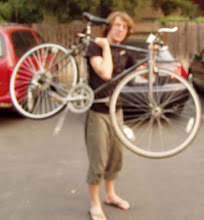I've counted drinks carefully since I started drinking in college and it has served me well since then, provided I didn't overwhelm my reasoning by drinking too quickly. However, while vodka may not go bad after it's been opened, most nondistilled spirits do, and this places constraints on the control you have over your own consumption, because even after four years of college there are still sober kids in Africa.
I can tell you from experience that it took a lot of organization and a little pain to empty my two brewing vessels, which I bought from the store filled with four liters of wine apiece. While there's no perishable alcohol in as big a container as jug wine, almost all wine and some beers pose similar logistical challenges.
As romantic as a picnic basket for two with a bottle of wine poking out the top may be, I've never really enjoyed drinking half a bottle of wine on such occasions for reasons both obvious and subtle. A bottle makes much more sense for a European-minded family, a double date or an intimate dinner with friends. Wine is still dictated by tradition and I have no expectation for unit sizes to change. On the plus side, I have high hopes for the emergence of screw caps as the industry standard. Synthetic corks are cool and all but once we've admitted that real cork is outdated, I think the leap to screw caps is a short one.
Beer, once again, is that exemplary form dominated by reasonableness. The classic unit-sizes of beer are either single-serving, keg or the forty, the former being perfect for friends or a rager of one. Much of beer is packaged in the most economical and innocuous of containers-- stainless metal. All of this is worth applauding. Aluminum cans reduce the impact on both the environment and the consumer. Single servings allow us to drink like the gentlemen we are.
Craft brewers are still worthy of critique, however. I understand the calculus that goes into choosing glass bottles-- they are still a symbol of quality and respect ingrained deeply in every American consumer's psyche. That's a hurdle worthy of sympathy. It's also a hurdle worth hurdling. Nobody is better positioned to break that psychological association in beverage packaging than the American craft brewer. A few brave breweries have gone to cans, primarily motivated by facilitating beer consumption in the great outdoors. I recommend looking for a 12-pack of cans the next time you're thirsty for New Belgium's Fat Tire. Anderson Valley is another notable brewery that's dabbling with the crinkly stuff.
I've also been fascinated by the role of the bottle size that's alternatively called a bomber, a growler or simply a double-- the 22 oz bottle. For the purposes of discussion I'm going to lump in 750mL bottles too. It turns out to be the bottle of choice for specialty productions by craft brewers. Rogue and Stone practically subsist off the format.
The association with small batches is partly for historical reasons. Bigger bottles mean fewer crown caps, less cleaning and less chance of contamination, which is great for the home or small-scale brewer. Furthermore, the size comes with the liberty of nonstandard pricing. Because the beer contained in doubles is often more expensive to make and distribute, the price ranges from $3-15. That's a far cry from the relative uniformity of $7-10 per six-pack. Releasing 22-only beers is also a perfect way for a brewer to force cheapskates like me who'd buy a single 12 oz into paying the full price of admission (and distribution), a business model which I grudgingly respect. My roommates can thank enterprising business models for their intermittent supply of free beer.
Finally, the bottle style comes with the cache and genuine charm of being similar in size to a wine bottle. While it's not uncommon for these specialty runs' abv to run into wine territory, there are plenty of 5-7% abv bottles that make a perfect treat for two. That fact endears them to me above all else. The format practically forces social drinking. Though I'd prefer the stronger specialty beers be packaged in more modest pint bottles, I think the format is generally awesome.
Subscribe to:
Post Comments (Atom)

No comments:
Post a Comment